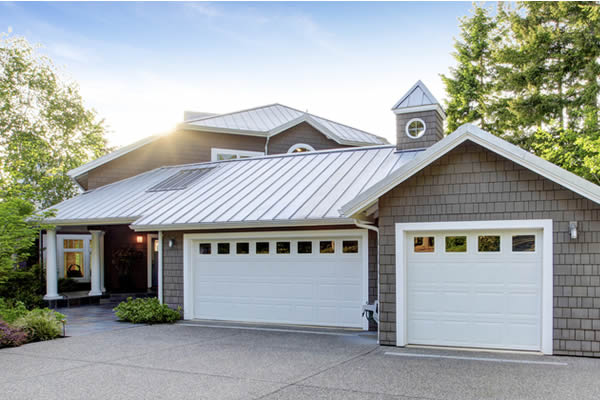Does Painting a Roof White Save Energy?
Author: Lee Polevoi | August 3, 2021
According to the U.S. Department of Energy, white or light-colored roofs, commonly known as cool roofs, can stay more than 50 degrees cooler than traditional roofing options. These energy savings can even translate into lower air-conditioning bills. So does painting a roof white save energy? Some compelling evidence suggests it might.

The Benefits of Cool Roofs
The Department of Energy highlights these additional benefits of a cool roof:
- They enhance the comfort of indoor spaces, such as a covered patio or garage, that do not have air conditioning.
- Decreasing roof temperature can contribute to a longer-lasting roof.
- A neighborhood community of cool roofs can "lower peak electricity demand," which in turn works to prevent power surges and outages.
However, not every building or location is suited for cool roofing options. Before offering this option to customers, roofing contractors should consider the overall environment, local climate, roof insulation quality and roof type, as well as how well a building's heating and cooling system operates.
When a White Roof Is the Most Beneficial
Generally speaking, a white or cool roof offers the greatest economic benefits in hot climates. Homeowners and commercial businesses in colder regions may see less advantage in this option, because a white roof doesn't retain heat efficiently in the winter.
It's also worth noting that snow and ice frequently build upon a cool roof, which is something a resident or business owner doesn't want if they live in a region with heavy snowfall.
Cool roof coating products are most economically feasible for commercial and industrial structures with low-slope roofs. For homes with asphalt shingle roofs, a shingle embedded with sun-reflecting granules may be a more practical choice than a white roof.
Roof Coating Options
While it's possible to consider installing a new roof with lighter-colored roofing materials, building owners may opt to retrofit their existing roofs with cool roof coatings. These liquid coatings come in acrylic, polymer or silicone options that are specifically designed to reflect light and heat.
Contractors who want to sell cool roof coatings should make sure their crews are properly trained to install them. Before applying any coating, start with a comprehensive roof cleaning to remove dirt, leaves and other debris. Make sure any cracks, penetrations or fasteners are properly repaired or sealed before spraying or rolling on the coating.
Membranes and Durability
One of the most popular membrane roofing options that come in light colors, without the need for a coating, is PVC. This single-ply option is designed to offset sunlight-related roof damage by reflecting heat and light from the roof back into the atmosphere. PVC is a durable choice as well, often enduring for more than 30 years.
TPO, or thermoplastic polyolefin, is another membrane option that comes in light colors. TPO can be more weather-resistant than PVC, and is often a better choice for regions that experience intense summer heat.
Does painting a roof white save energy? Cool roofing is a little more complicated than that, but it's one solution for commercial roofing clients who want to save on energy expenses.